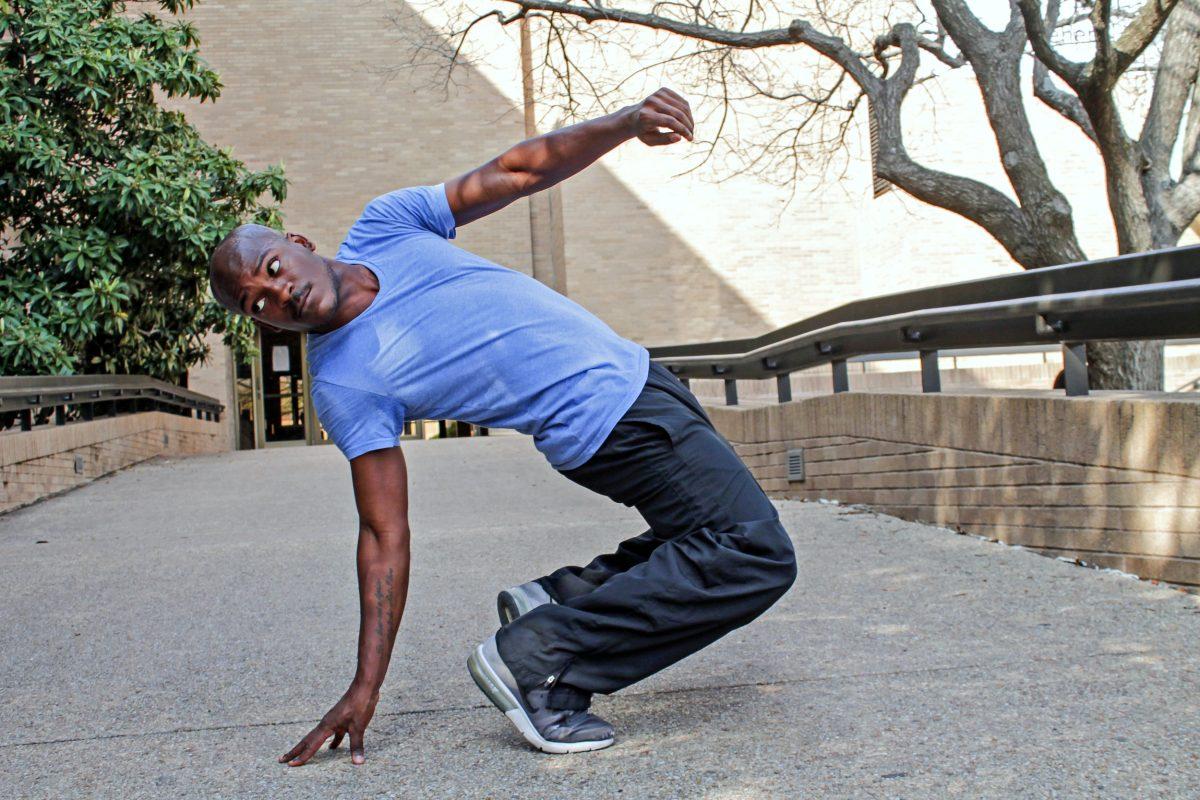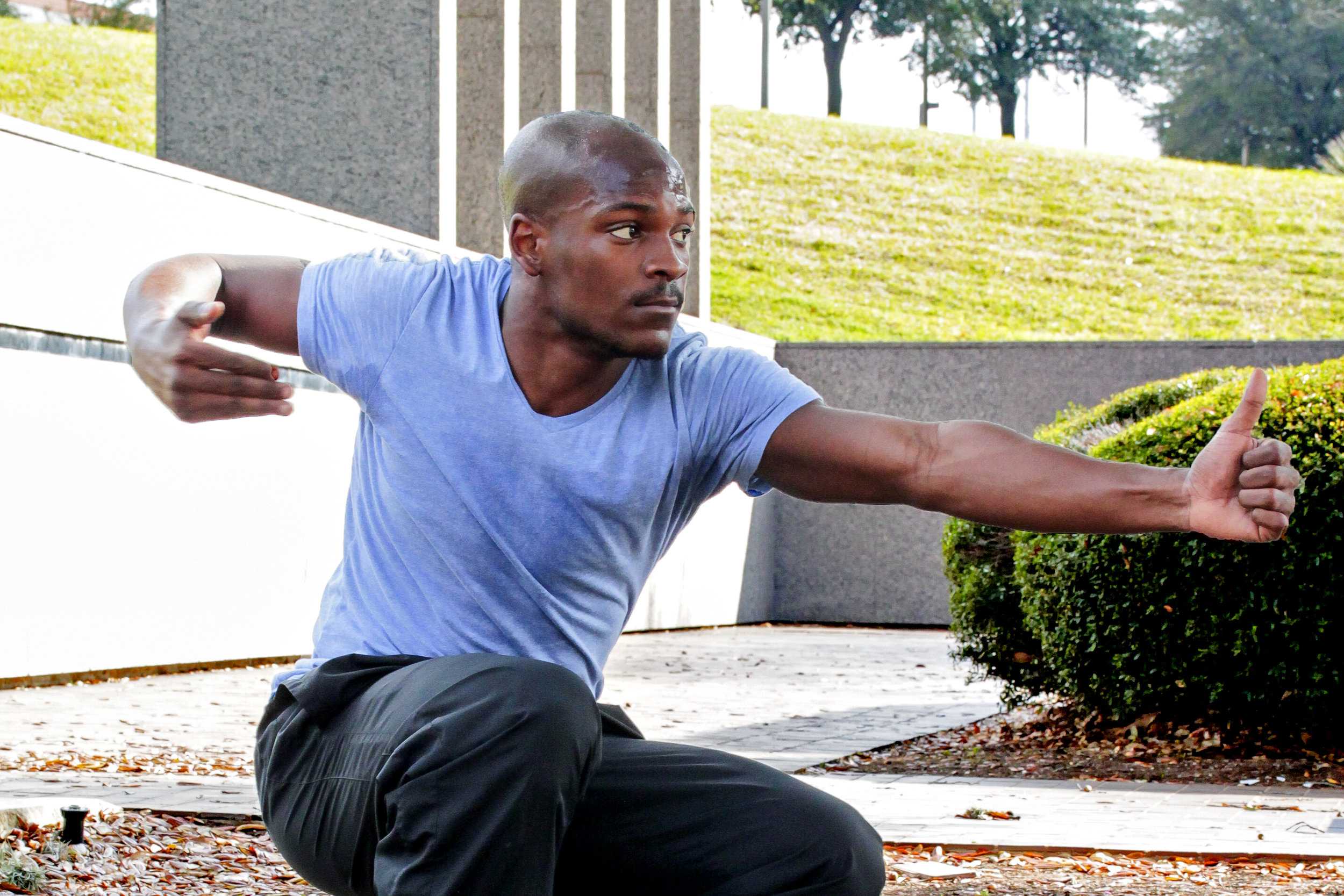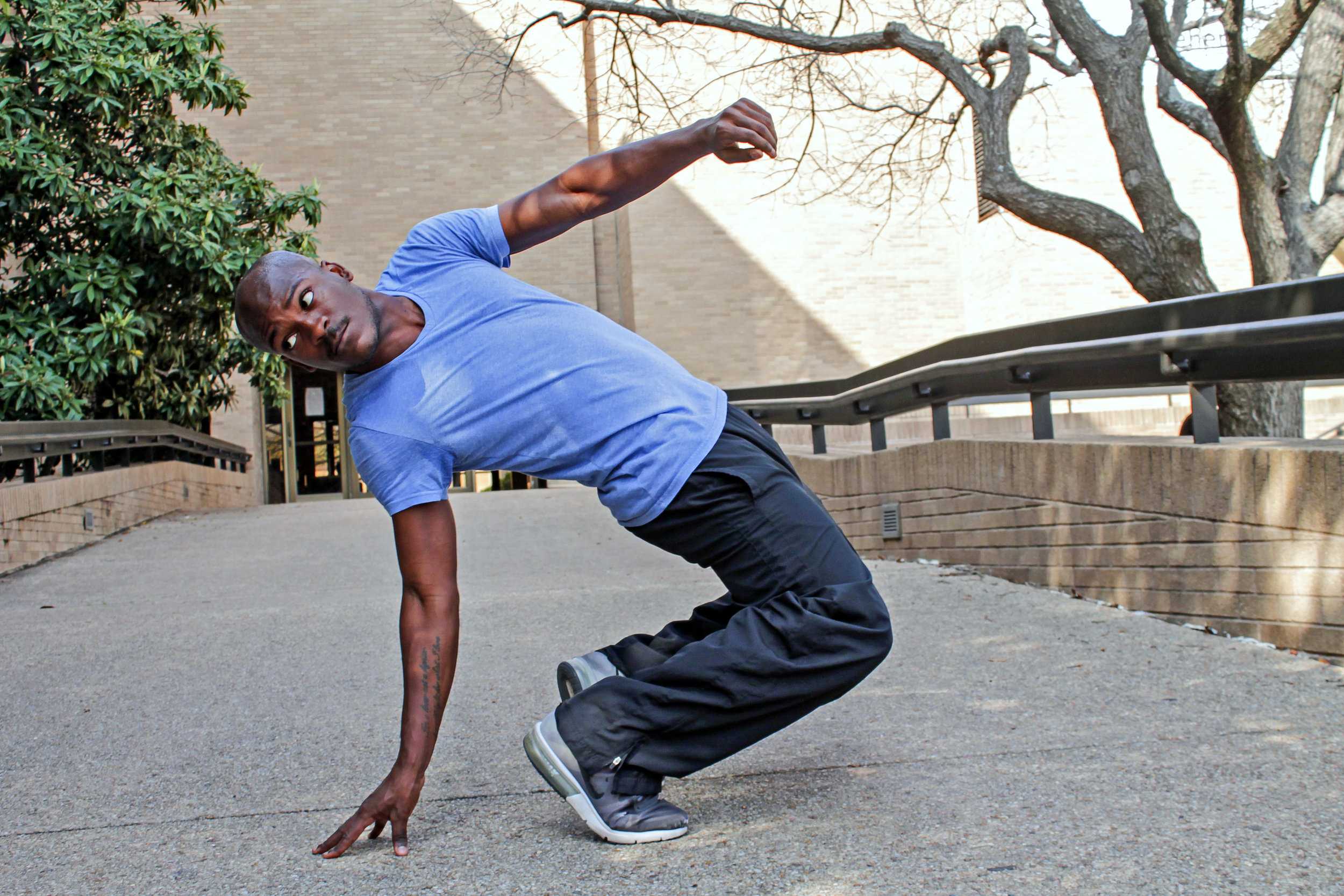Senior dance major and “Momentum” performer D’Lonte Lawson free styles in front of the Bass Concert Hall.
After over a year of preparation and months of rehearsal, the University of Texas at Austin’s Dance Repertory Theatre revealed “Momentum,” a concert exploring the influences of the African diaspora on contemporary dance. The concert brilliantly expressed complex narratives of race, gender and culture through the movements of its dancers.
Story by Langston Dillard
Photos by Ravin Lee
“Momentum” made its debut in a moment when cultural appropriation and racial identity are topics of frequent discussion and debate. In spite of this timeliness, the scope of the concert is far larger than an immediate reaction to the social climate of the United States.
Lyn C. Wiltshire, professor of dance at UT and an artistic director of “Momentum,” refutes the idea that the concert was produced solely as a means of reactionary commentary. “The way things integrated into one another, you would think that, but the thematic proposal [for “Momentum”] was pitched almost 18 months ago,” says Wiltshire, who has worked with the university’s dance department for over two decades.
However, the concert was thoughtfully scheduled during Black History Month. Artistic Director of Dance Repertory Theater and head of UT’s dance program, Charles O. Anderson, directed the show. The performance provided 11 choreographers with a platform for political dialogue. The platform allowed each instructor to express the ways their individual techniques have been influenced by styles of the African diaspora.
Although the holistic concert was not a direct response to any singular event, references to specific stories can be found in various performances. “Walking with Natasha”, choreographed by Ananya Chatterjea, grew from the story of Natasha Nkhama, a sophomore at Baylor University who was accosted by another student during her commute to class. The story made national headlines and emphasized tensions that had come to light following the election.
“Ananya was responding to that set of circumstances, about how that [type of interaction] can happen to any person,” Wiltshire says. By pulling inspiration from this event, Chatterjea’s piece challenges the audience, posing questions like, “Who are you as the bystander? Do you walk with this person? Do you support them from afar?”
While some performances, like “Walking with Natasha”, drew influence from a specific moment, other pieces, like Wiltshire’s, removed any trace of such specificity. “I didn’t want people to identify the event [that prompted my piece],” Wiltshire says.
Her piece, “Slow Fade to Black,” partially addresses ways in which a political moment can alter individual emotions and group dynamics. “I wanted the audience to have a clear understanding that three moods can happen at once, and they can filter within one another on a regular basis.”
Senior dance major and “Momentum” performer D’Lonte Lawson free styles in front of the Bass Concert Hall.
In spite of the overt and covert relationships to recent events, the initial purpose of the concert transcends conversations of a singular issue or narrative.“Before we started anything, Charles sat down with us as a company and explained that this concert isn’t about black people or Africans or African Americans, per se,” says fourth year dance major D’Lonte Lawson. “It’s about the influences that Africans and African Americans have had since the beginning of western dance.”
Wiltshire says “Momentum” argues that exposure to the African diaspora does not need to be supplemental. She is challenging the perception that these techniques and influences are somehow less significant than traditionally classical styles. “With Charles taking head of the dance department, he has tried to sway people away from the thought process that ballet is the foundation of all dance,” Lawson said.
Wiltshire, along with fellow “Momentum” artistic directors, Anderson and Jeremy Arnold, “wanted to blur the boundary” between styles of dance that are considered fundamental. The three-hour production incorporated pieces composed of tap, hip-hop and modern, as well as pieces with South Asian influences, reminding the audience that the African diaspora’s influence can manifest in countless ways.
By including choreographers with unique perspectives and backgrounds, each of the concert’s 11 performances were vastly diverse in their rhythm, style and mood. Wiltshire acknowledges the significance of this diversity, as it broadens the perspective of the concert and makes it accessible to a wide audience.“It would be shallow to target these influences to a specific audience,” Wiltshire says, highlighting the concert’s universal relevance.
“Momentum” evokes a strategic and critical thinking that lingers with the audience beyond the confines of the theater. “I know for a fact that everyone who walked out of there had one of those pieces playing in their mind. I don’t know which one; that’s really not important,” Wiltshire says.
Beyond social and political significance, concerts like “Momentum” foster a culture that benefits students and young people by depicting the unbounded potential of their self-expression.“With this concert, I learned that not everything is as you see it, and not everything is black and white. Usually, the most information you can gain is in that grey area,” Lawson says. “I learned that I can tell my story any way I choose.”
Wiltshire, who has worked alongside Lawson throughout his time in the dance department, echoes this sentiment.“It feels good for students to realize ‘I know who I am and I’m not anything less because of how society wants to pigeonhole me’,” says Wiltshire, who encourages her dancers to allow their authentic identities to “come through, chest forward, heart forward.”
“Momentum”, which ran from Feb.15-26, continues a conversation about the ways in which art is influenced by society and, in turn, the way society is influenced by art.













































